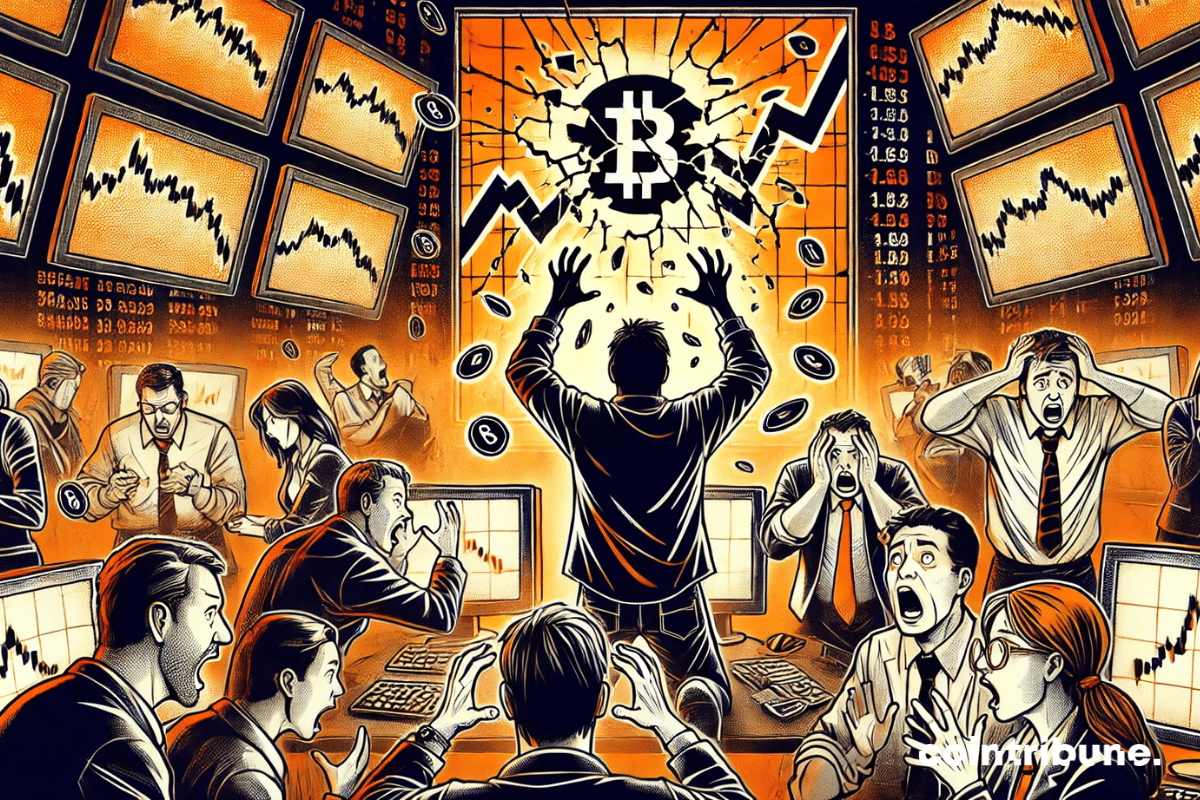 CaryptosHeadlines Media Has Launched Its Native Token CHT.
Airdrop Is Live For Everyone, Claim Instant 5000 CHT Tokens Worth Of $50 USDT.
Join the Airdrop at the official website,
CryptosHeadlinesToken.com
CaryptosHeadlines Media Has Launched Its Native Token CHT.
Airdrop Is Live For Everyone, Claim Instant 5000 CHT Tokens Worth Of $50 USDT.
Join the Airdrop at the official website,
CryptosHeadlinesToken.com
15h05
6
min read 
The crypto ecosystem may be entering an unprecedented phase of transformation. For years, markets have followed well-established cycles, dictated by the internal mechanisms of bitcoin, notably the halving, which marks the periods of rise and fall. Today, a significant political initiative is emerging, likely to disrupt these historical foundations. U.S. Senator Cynthia Lummis has proposed the Bitcoin Reserve Act, a bill aimed at recognizing bitcoin as a strategic reserve asset for the United States. This initiative, which plans for the gradual integration of one million bitcoins into U.S. federal reserves, takes place in a context of growing economic and geopolitical rivalries. As powers like Russia and Germany are also considering adopting similar strategies, this project is eye-catching. Furthermore, the implications of such a move extend beyond American borders and redefine the role of Bitcoin on the international stage, granting it an unprecedented status in the history of cryptos.


The Bold Proposal of the Bitcoin Reserve Act
The Bitcoin Reserve Act, proposed by Senator Cynthia Lummis, aims to provide the United States with an innovative legal framework to integrate bitcoin into their strategic reserves. This bill foresees the purchase of 200,000 bitcoins per year over a period of five years, allowing the U.S. government to accumulate a total of one million bitcoins. Such an initiative reflects an ambitious vision, aiming to make bitcoin a pillar of U.S. public finances in order to consolidate its status as a globally recognized asset. Iliya Kalchev, an analyst at Nexo, called this initiative a “historic moment for bitcoin.” He believes it could officially legitimize it as a “global financial instrument.”
Support for this proposal finds particular resonance in the camp of elected President Donald Trump, known for his pro-crypto positions. Thus, in an interview with CNBC, Trump compared the establishment of a strategic bitcoin stockpile to that of U.S. oil reserves, highlighting its potential as a national reserve asset. This position was corroborated by Denis Porter, co-founder of the Satoshi Act Fund. In a post dated December 15, 2024, on social network X (formerly Twitter), Porter stated that Trump’s team is actively examining the idea of an executive order to create a strategic reserve of bitcoins.
However, despite this apparent enthusiasm, notable obstacles could hinder the realization of the project. While a presidential decree would lay the initial groundwork, the sustainability of such an initiative would depend on a vote in Congress. This legislative passage is crucial to protect the program from potential political shifts, especially during changes in majority. Such political uncertainty illustrates the inherent challenges of implementing such an ambitious strategy, in a context where bitcoin remains a topic of debate within American institutions.
A Global Competition and a Disruption of Market Dynamics
The impact of the Bitcoin Reserve Act could extend well beyond American borders, triggering an unprecedented global dynamic. According to several experts, this initiative would push other nations to build their own bitcoin reserves to avoid losing their economic competitiveness. George S. Georgiades, a lawyer specializing in cryptos, described this project as a possible catalyst for widespread adoption: “the implementation of the Bitcoin Reserve Act would lead to a major change for global adoption. It could force nations to follow suit or risk being left behind.” Such international competition could accelerate bitcoin’s transformation into a global monetary standard, positioning this crypto as an indispensable strategic asset.
This change would also have profound consequences on the behaviors of institutional investors. Thus, unlike traditional bitcoin cycles, historically dominated by the halving and characterized by periods of strong growth followed by brutal corrections, sustained demand from states and financial institutions could significantly reduce volatility. This evolution, already perceptible, would call into question the famed four-year cycles. “We are already observing structural changes, and the four-year cycles have been questioned repeatedly,” emphasizes Iliya Kalchev.
In the longer term, this disruption could introduce increased stability in the markets, attracting more institutional investors. These investors, with their disciplined strategies and greater financial capacities, would be able to sustainably influence current dynamics. Indeed, the strengthened presence of institutional players could transform bitcoin into a market less reactive to the speculative behaviors of individuals, thus reducing the amplitude of price fluctuations. In this context, the adoption of the Bitcoin Reserve Act would pave the way for a new era, where bitcoin would be more than just a reserve asset, but a true pillar of global financial systems.
The adoption of the Bitcoin Reserve Act could mark a historic turning point in the way governments view cryptos, redefining the role of bitcoin on the international stage. This initiative could transform the crypto into an indispensable strategic asset, aiming to sustainably influence the dynamics of financial markets. However, this bold vision is not without risks. Increased volatility could arise in the short term, while a new balance is established.
Maximize your Cointribune experience with our “Read to Earn” program! For every article you read, earn points and access exclusive rewards. Sign up now and start earning benefits.
Diplômé de Sciences Po Toulouse et titulaire d’une certification consultant blockchain délivrée par Alyra, j’ai rejoint l’aventure Cointribune en 2019.
Convaincu du potentiel de la blockchain pour transformer de nombreux secteurs de l’économie, j’ai pris l’engagement de sensibiliser et d’informer le grand public sur cet écosystème en constante évolution. Mon objectif est de permettre à chacun de mieux comprendre la blockchain et de saisir les opportunités qu’elle offre. Je m’efforce chaque jour de fournir une analyse objective de l’actualité, de décrypter les tendances du marché, de relayer les dernières innovations technologiques et de mettre en perspective les enjeux économiques et sociétaux de cette révolution en marche.
DISCLAIMER
The views, thoughts, and opinions expressed in this article belong solely to the author, and should not be taken as investment advice. Do your own research before taking any investment decisions.












